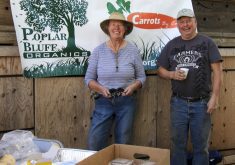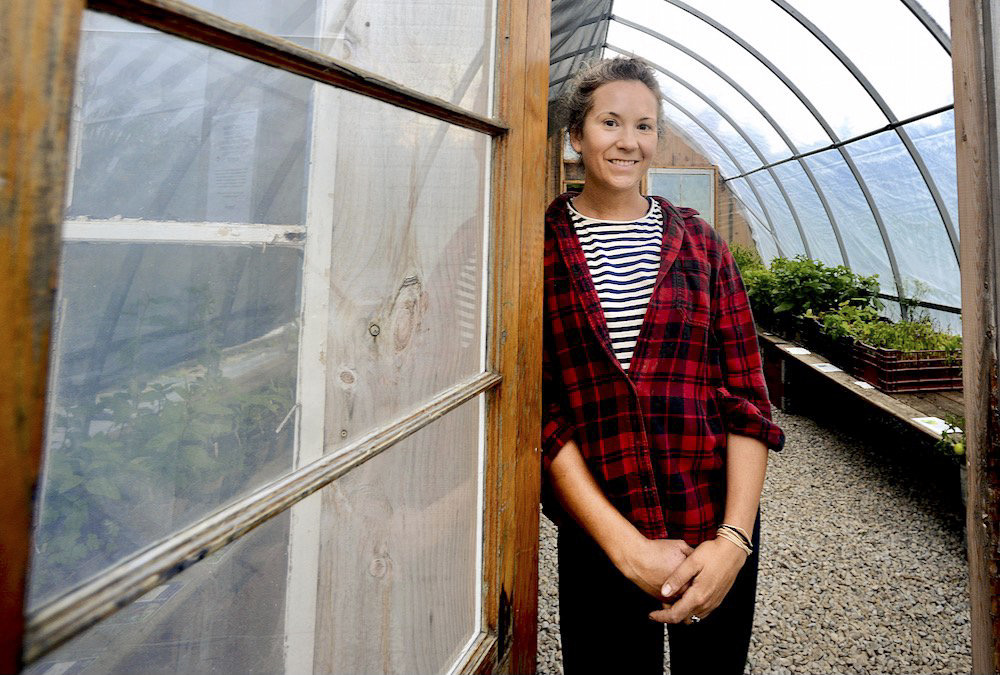When it comes to getting locally grown food to consumers, farmers can only do so much. For regional food systems to thrive there needs to be more collaboration among farmers and from many other people along the chain.
Troy Strozek and Michelle Schram, owners and operaters of Fresh Roots Farm at Cartwright, just north of the U.S. border southwest of Winnipeg, are already collaborating with other local farmers to offer their farm-grown products, alongside their own, through their established online store.
“There is lots of opportunity to work with other farms and to source from other farms,” says Schram.
Read Also

Winter downtime: Organize your farm records now for smoother operation
How to organize farm finances paperwork
The move came with a business insight. “If we have (production) limitations, but we have the demand, are there other people out there that don’t want to do the marketing but could provide production?” she and Strozek asked themselves. “We just need to keep pushing ourselves to think outside the box. Whenever we have done things like that with other farms it has always been beneficial to everyone.”
Strozek and Schram have been direct selling their grass-fed beef and honey from their own bees since 2012. Knowing that the traditional method of selling at the farmers market wasn’t going to work for them because they were three hours away from Winnipeg, they decided right from the outset to focus on online marketing.
Over the years their sales model has evolved and today they offer both an online store and a subscription service. Customers have the option to order a-la-carte beef cuts from the online store, or they can purchase a six-month subscription, over which time they receive a monthly box of meat with a variety of cuts.
These sales methods help them better manage their inventory. Plus, they provide the stability of a monthly revenue stream of product that is already presold.
Strozek and Schram deliver once a month to Winnipeg, usually to around 150 households. Every year, on average they serve around 1,500 customers and fill 1,700 orders.
Small farms are specializing
The pair are the first to admit their type of farming isn’t for everyone and that it can be exhausting, especially as they divide their time between the farm, marketing and raising two young sons.
They are also seeing a lot of transition in the sector, with more direct farmers simplifying their operations to specialize in one or two products.
“People are realizing that if they are trying to raise pigs, chickens and cattle so they can offer their customers an array of products, each of those is its own enterprise,” Strozek says. “Each
has its own expenses, its own infrastructure and it requires different skill sets. We have definitely seen more specialization happening recently, because even with just two enterprises, the times when work is overlapping is super-challenging.”
Then add the marketing side of things, which is primarily Schram’s responsibility and takes a huge amount of time and resources. Although she uses social media, she’s not convinced that every farm selling to consumers necessarily needs it. She has found the most effective way to stay connected with their customers is through their twice monthly e-newsletter because customers like reading stories about the farm and what they are doing.
Creating farm-to-fork
In today’s direct-to-customer sector — and especially for smaller farms in the sector — it comes down to finding a system that works for that particular farm.
A half-hour west of Strozek and Schram near Crystal City, Troy Schott and his sister, Rheagan Stewart have been direct marketing from their farm, Schott Ranch, since 2007, largely by focusing on making a trip to the farm an experience for their customers.

The brother and sister duo now have a year-round store where they sell their pasture-raised beef, chicken, pork, eggs and farm produce, as well as their own handmade tallow soaps and skin creams, and other local products.
Schott, though, studied greenspace management in college and also runs a landscaping business in addition to farming 2,600 acres of grain with his brother, Dennis.
- RELATED: Banding together on bison marketing
Four years ago, they added a greenhouse to the farm to sell annual and perennial bedding plants, trees and shrubs. Then, a couple of years ago, they launched a U-pick flower patch.
Plus, with her background in the culinary arts, Stewart is heading up their plan to build a fully certified kitchen on the farm where they can add value by making other food products, such as preserves and pickles. The business also plans to offer a subscription-based meal plan, with ready-to-cook frozen meals made from their own beef and produce.
Their latest diversification has been into Wagyu cattle, the Japanese breed known for its highly marbled meat. After purchasing a Wagyu bull from a breeder in Alberta, Schott has spent the last few years growing the herd, producing their first Wagyu beef for sale last year.
Wagyu cattle are fed for 30 months, about six months longer than regular beef cattle, and must be finished on a special diet of free-range hay and a little grain. The beef is considered a delicacy and retails for about $45 a pound for ribeye steak.
In turn, that means Schott needs a more creative approach to market it.
“The first Wagyu we had butchered so that the meat showed up around December 10 last year,” he said. “We sold all of the Wagyu beef in two weeks before Christmas with people buying packages for gifts.”
Now, the farm is on its way to producing a lot more Wagyu beef and hopes to sell to some high-end restaurants in Winnipeg, but the beauty is that if they don’t make the Wagyu grade (for marbling) Schott can still sell them as regular beef because he currently has more demand than he does stock.

Big land prices for small farms
Strozek and Schram don’t plan to do a lot differently as they continue to move ahead with farming and marketing. With high land prices in their area, expanding the farm’s acreage isn’t an option, which is why they have focused on regenerative agricultural practices and careful grazing management to maximize the carrying capacity of their existing pastures.
They have also expanded their bee operation significantly over the past few years, and do all their own processing and packaging on the farm.
“It’s been a way to diversify our income without the land overhead,” Strozek says. “The question is how to grow the honey business, but you can only scale so much before you reach the point where you need more labour, equipment and mechanization, which we are not averse to doing at some point.”
That said, one of their biggest challenges, and one common to many farms, is a shortage of labour. Even though the couple use government wage subsidy programs to hire summer students each year, it’s becoming harder and harder to find candidates with the skills they need, especially for the honey enterprise. Even those with the desire to work on a farm are hard to find.
“The pool of interest seems to be shrinking year to year,” Strozek says. “Maybe that’s evidence of a cultural shift and some of those larger, societal barriers to entry.”
The slow climb
Because of their distance from a major centre, getting people beyond just locals to come to the farm is an ongoing challenge for Schott and Stewart, so they spend a lot of time on social media, posting about what they are doing and what’s available, and they send out flyers twice a year to surrounding communities. But they are realistic about the time and effort it takes to build a direct-marketing business.
“We’ve always had the mentality that, as hard as it sometimes is, with our niche it’s definitely a slow burn; it takes time,” Stewart says.
“I look at the bigger picture,” Schott adds. “We are only on year four of a business purchase, so resilience is the biggest thing, and you have to be prepared to work hard. This year I am already seeing things change to the better. We have more people coming and we have only got 10 rib-eye beef steaks left in the freezer right now, so it’s working.”
The way forward?
Interestingly, Strozek and Troy are seeing new ideas, including new ways into the industry. Some small-farming entrants, for instance, are building their market before they even have a farm by buying from other farms and distributing the products.
It’s a model that isn’t for everyone, but it speaks to the kind of creative and entrepreneurial solutions that are needed to further develop resilient and effective regional food markets.
“There is some neat work happening at the consumer end with the development of food hubs and ways to aggregate, market and distribute products in the city, because not every farmer can or wants to do all of that work,” Strozek says.
“Farmers are so stretched, and they are trying to do so many things already,” he says. “If this is something that we value as a society, if we want to create space for smaller farms to survive, it needs extra support from consumers, government and other actors in the industry.”
















